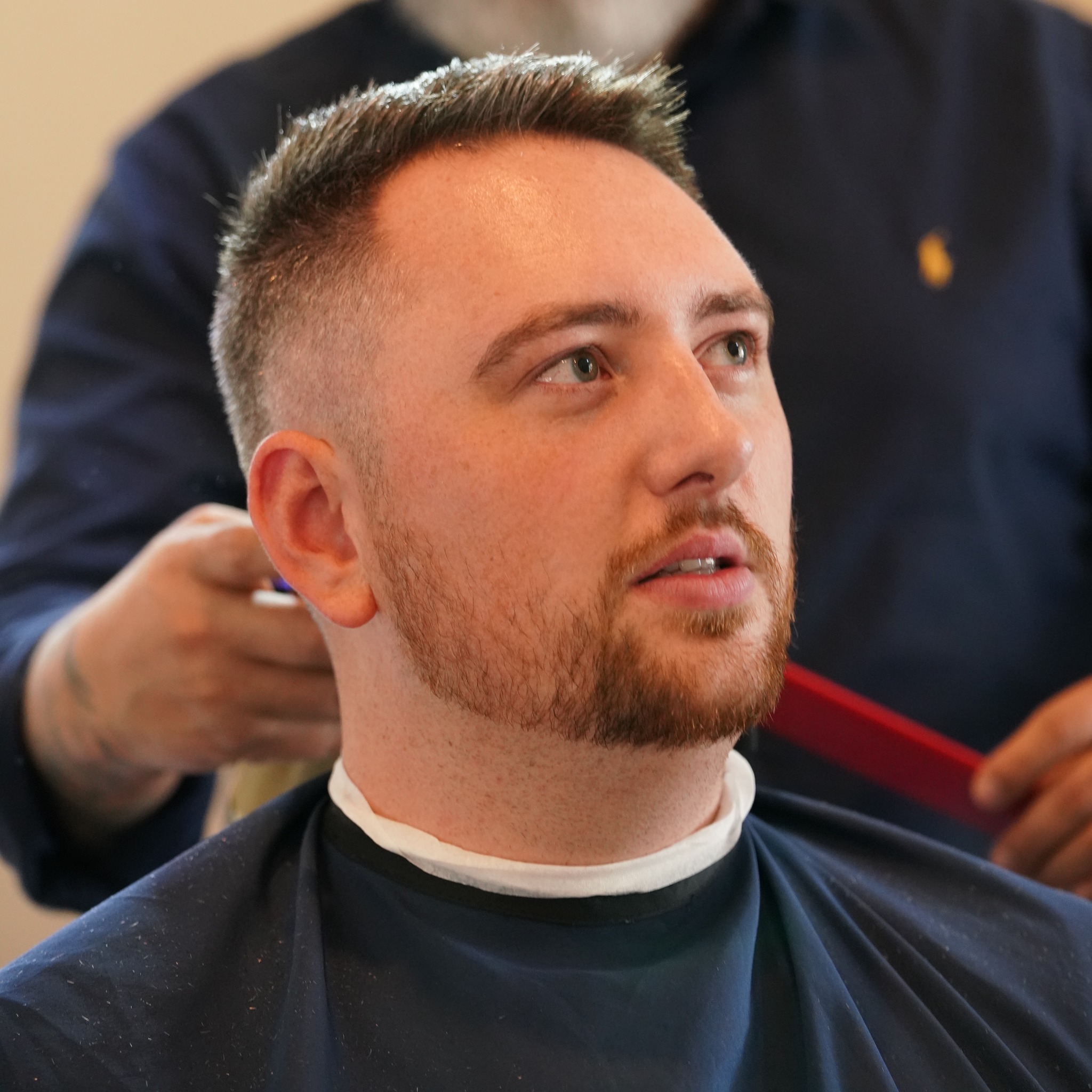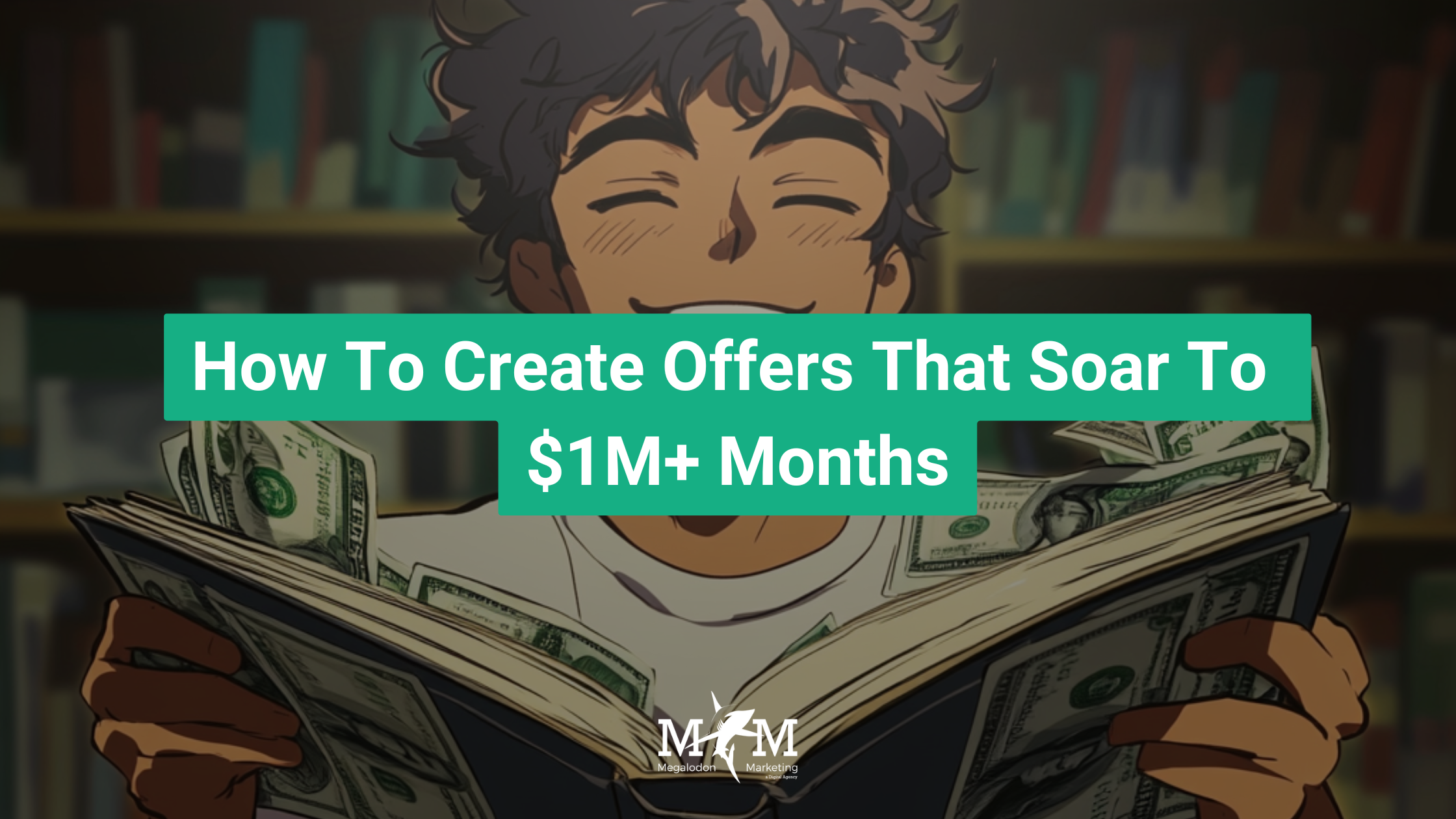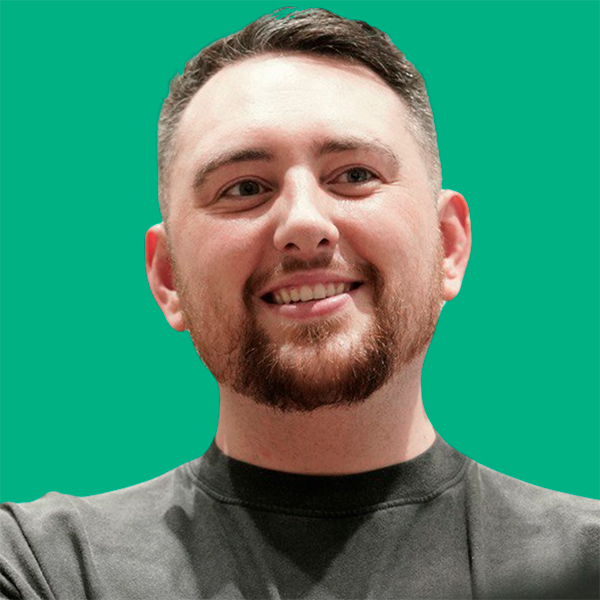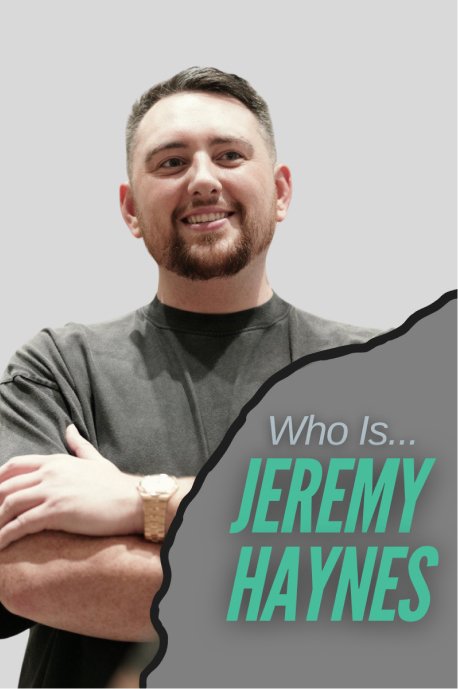I hope you enjoy reading this blog post. If you want my team to just do your marketing for you, click here.

I hope you enjoy reading this blog post. If you want my team to just do your marketing for you, click here.
Author: Jeremy Haynes | founder of Megalodon Marketing.

Earnings Disclaimer: You have a .1% probability of hitting million dollar months according to the US Bureau of Labor Statistics. As stated by law, we can not and do not make any guarantees about your own ability to get results or earn any money with our ideas, information, programs or strategies. We don’t know you and, besides, your results in life are up to you. We’re here to help by giving you our greatest strategies to move you forward, faster. However, nothing on this page or any of our websites or emails is a promise or guarantee of future earnings. Any financial numbers referenced here, or on any of our sites or emails, are simply estimates or projections or past results, and should not be considered exact, actual or as a promise of potential earnings – all numbers are illustrative only.
Think about what it takes to generate a million dollars in revenue every month. You might imagine you need tens of thousands of customers or the world’s biggest social media following. Yet in truth, you can get there with fewer, better-paying clients. The key is to design offers specifically with rich people in mind. This strategic choice saves you from needing a massive volume of sales because a small number of big-ticket transactions can match (or exceed) what you’d get from thousands of low-priced purchases.
That’s the first step: letting go of the assumption that “the masses” are your best audience. The less money someone has, the more likely they’ll approach your product with hesitancy or fail to implement whatever you teach because they lack the capital to see it through. In my experience helping multiple clients reach million-dollar months, the fastest leaps always come from those who deliberately target affluent customers.
Picture an influencer with three million followers, all drawn by content on real estate investing. This influencer originally priced a membership at $29 a month. Thousands joined, but only a fraction actually executed on the lessons, leading to poor testimonials, negative feedback, and limited monthly revenue per person. By upping that offer to $50,000—an enormous jump by most people’s standards—he attracted a serious subset of followers who had deeper pockets and the seriousness to act on large real estate plays. Suddenly, he only needed 20 buyers to crack $1M a month. That, in a nutshell, is why you aim high.
One of the best mental models for understanding how to build winning offers is what I like to call the “You’re F***ing Me” Scale. The moment someone forks over cash for your product or service, you have that money, and they have promise—but not yet a result. So in that very moment, **you are f***ing them** because they just paid, and they don’t have the ROI or transformation yet. This is why so many people hesitate before clicking “buy.” They have to trust you.
The clock starts ticking the second they complete that purchase. The question is: How fast can you flip it so that they feel they’re the ones “f***ing you”? That shift happens the instant your product or service delivers tangible, meaningful results in excess of what they paid.
For instance, if you charge someone $5,000 a month to be in a high-level program and within a single week, they make $60,000 off the strategies you gave them, the scale instantly flips. They hand you five grand, but in return they make an extra $60,000. Who got the better deal? They did. They’re effectively “f***ing you” now because they gained more financial benefit than they spent. When that happens consistently, guess what? You get stellar testimonials, you stack up case studies, and that perceived value grows. The next time you charge five, ten, or even fifty grand, buyers won’t blink because they’ve heard how quickly you produce success.
If there’s one lesson I want you to remember, it’s this: Price correlates directly to the result you can generate for your clients. Let’s break down why.
When you advertise a certain price—say $10,000 for a real estate mentorship—wealthy clients won’t recoil if they believe they can plausibly earn many multiples of that ten grand once they implement your training. They’ll say, “You’re charging me $10,000, but if I just follow the steps, I might make an extra $100,000 or more over the next year.” That’s a 10x potential, which is a powerful ROI story to tell yourself.
Conversely, if your results only enable the average person to make, say, $500 more per month, you’re not justified in charging $10k. Anyone with half a brain would say, “That’s expensive.” So you need to align your price with realistic outcomes, especially the speed and size of those outcomes.
This also explains why millionaires go for “costly” products but might balk at “expensive” ones. It’s not the absolute dollar figure; it’s whether the value trumps that number. Even if your program is $50,000, if you’re teaching an individual how to recoup $300,000 in 90 days, it feels cheap compared to the upside.
I want to drill down on this concept of costly vs. expensive because it’s essential for crafting an offer that people find irresistible yet profitable for you.
The difference should always be that your buyer perceives “Yes, this is definitely going to cost a lot, but I get extraordinary value in return.” That is the hallmark of a strong high-ticket program.
We’re about to get into the core mechanics of an ecosystem that can make you millions. All my clients who thrive at or above the million-dollar mark have structured their offers to accommodate three basic categories, each one capturing a specific need based on budget, time constraints, and desire for speed.
If you have only one of these three tiers, you’re leaving money on the table. People who can’t afford your Done-For-You might happily jump into Done-With-You. Those who think, “I’ve already got a decent handle on this but just need the info,” can go into Done-On-Your-Own. You capture the entire spectrum of interest without turning anyone away.
It helps to see all this in action. Let’s look at a few real examples:
Let’s dissect one example of how to logically approach the path to a seven-figure month. Suppose you decide on a $10,000 offer.
This is the sort of arithmetic that clarifies what resources you need. You can see how big your ad spend should be, whether you can handle the volume, or if you should adjust the price or funnel strategy. Once you have the map, it’s simply about execution.
Meet Justin, a friend who realized he was stuck selling real estate wholesaling offers—essentially a hustle-based, time-intensive strategy that typically appeals to people with more ambition than capital. In other words, it’s a magnet for folks short on money. That’s not a great formula for building an eight-figure empire.
Justin sat down with me to strategize a different angle: targeting wealthy buyers who genuinely want to learn how to invest big in real estate, whether that means multi-unit developments or entire neighborhood projects. Naturally, that requires significant capital. If you’re teaching someone a strategy that demands six figures or more to deploy, you can’t reasonably sell your course for $2,000. All you’re doing is attracting people who can pay for the information but can’t actually use it.
So we zeroed in on pricing his new course in the $10,000–$15,000 range. That sticker price alone signals “This is not for dabblers or people afraid to spend money.” If a person is prepared to drop $10k on mentorship, they likely have the resources to buy land, fund a deal, or partner on bigger real estate moves. This is a prime example of how you correlate the cost of entry with the cost of playing the game after the course. When your buyer can see the entire process from paying five figures for the training to spending six or seven figures on property, they’re serious enough to do it—and do it well.
People often assume that launching a cheap or “low-ticket” offer is the best route to quick wins and broad adoption, especially if they have a large social media following. Yet experience shows that low-price membership sites or $500 courses can generate a tsunami of headaches:
Low-ticket offers aren’t inherently evil, but they’re rarely the formula for a business targeting million-dollar months with minimal friction. You can easily find yourself scaling up support costs, overhead, and negative complaints just to keep the boat afloat. Meanwhile, high-ticket deals can reduce your volume needs from thousands to a few dozen each month, drastically improving quality control, customer satisfaction, and profitability.
Let’s do a quick recap of everything that’s crucial:
Once you have all these parts working in harmony, you’ll see your monthly income climb steadily. You’ll have the clarity to diagnose where any issue arises. If you’re not getting enough calls booked, you know to adjust ad spend or your funnel. If your close rate is weak, you train or replace closers. If your show-up rate is below 50%, you optimize scheduling or your follow-up process. It’s a straightforward formula that scales once you treat it systematically.
Going from five-figure months to a consistent seven-figure run isn’t magic; it’s math, positioning, and offer design. The concepts here—selling to people with capital, proving immense value with fast results, and engineering an ecosystem of three distinct offer tiers—cover the core pillars of unstoppable growth.
Ask yourself:
As soon as you align all these elements, you’ll see precisely how straightforward it can be to break past that elusive million-dollar month. Rich buyers want to get richer, and they’ll pay good money for a fast, reliable result. If you can be the person or company who provides that, you’re on the highway to revenue levels you once thought unimaginable.
If you’ve taken the time to digest all these principles, the next step is simple: put them into action. Map out your existing offers (or the ones you plan to create). Decide how you’ll price them based on the outcome, resources, and speed. Remember that the more hands-on you are, the higher the investment you can command—because you’re taking the complexity off your customer’s plate.
Most importantly, start targeting and messaging to buyers who already have the money and are looking for vehicles to multiply it. That single shift in your business focus can change your entire trajectory. Upgrading your clientele from bargain hunters to serious, well-capitalized players is the ultimate game-changer.
Take that leap and commit to building and pricing in a way that reflects your ability to produce massive results. If you do it right, you’ll never struggle to sell. Instead, you’ll be selecting who you want to work with from a pool of people eager to pay premium prices—and come away thrilled with their decision.
Put these strategies to work and watch how quickly “million-dollar months” stops feeling like a pipe dream and starts being your new normal. The formula is right here; all that’s left is for you to act on it.

Jeremy Haynes is the founder of Megalodon Marketing. He is considered one of the top digital marketers and has the results to back it up. Jeremy has consistently demonstrated his expertise whether it be through his content advertising “propaganda” strategies that are originated by him, as well as his funnel and direct response marketing strategies. He’s trusted by the biggest names in the industries his agency works in and by over 4,000+ paid students that learn how to become better digital marketers and agency owners through his education products.

Jeremy Haynes is the founder of Megalodon Marketing. He is considered one of the top digital marketers and has the results to back it up. Jeremy has consistently demonstrated his expertise whether it be through his content advertising “propaganda” strategies that are originated by him, as well as his funnel and direct response marketing strategies. He’s trusted by the biggest names in the industries his agency works in and by over 4,000+ paid students that learn how to become better digital marketers and agency owners through his education products.
This site is not a part of the Facebook website or Facebook Inc.
This site is NOT /endorsed by Facebook in any way. FACEBOOK is a trademark of FACEBOOK, Inc.
We don’t believe in get-rich-quick programs or short cuts. We believe in hard work, adding value and serving others. And that’s what our programs and information we share are designed to help you do. As stated by law, we can not and do not make any guarantees about your own ability to get results or earn any money with our ideas, information, programs or strategies. We don’t know you and, besides, your results in life are up to you. Agreed? We’re here to help by giving you our greatest strategies to move you forward, faster. However, nothing on this page or any of our websites or emails is a promise or guarantee of future earnings. Any financial numbers referenced here, or on any of our sites or emails, are simply estimates or projections or past results, and should not be considered exact, actual or as a promise of potential earnings – all numbers are illustrative only.
Results may vary and testimonials are not claimed to represent typical results. All testimonials are real. These results are meant as a showcase of what the best, most motivated and driven clients have done and should not be taken as average or typical results.
You should perform your own due diligence and use your own best judgment prior to making any investment decision pertaining to your business. By virtue of visiting this site or interacting with any portion of this site, you agree that you’re fully responsible for the investments you make and any outcomes that may result.
Do you have questions? Please email [email protected]
Call or Text (305) 704-0094